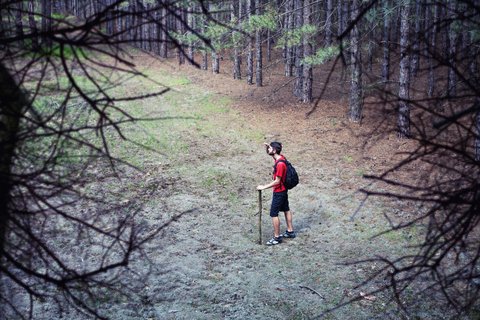Those unfortunate outdoorsmen who have ever been lost know the rush of emotion and panic that comes crashing in when your predicament sets in.
At the exact moment when being lost is confirmed, a person tends to either make the situation worse by “freaking out,” or they’ll remain calm and figure out their next move.
A popular acronym in the hiking community in situations like this is STOP, which is used to remind a lost hiker what to do when they first realize they’re off course.
Each letter of STOP represents a specific part of remaining calm when lost in the woods. When followed, it increases the odds of figuring a way out of a potential emergency.
S is for STOP
It’s as simple as that, really. Don’t panic and go rambling around in a frenzy, hoping to find a quick fix to your problem. I know it’s difficult but instead, sit down, relax and have a drink of water and a snack. Once you regain your composure, you’ll be ready for the next step in the process.
T is for THINK
If you have a working compass, decide which way is north and relate that bearing with what direction you were headed when leaving the trailhead or your last known break point. If you’re with a hiking partner, calmly share your thoughts with each other and come to an agreement on your next move.
O is for OBSERVE
To get a better grasp of where you are, look around at your surroundings—immediate and further out if you can see—and tune in your senses. Do you hear a road noise in the distance, a flowing creek, a barking dog or any other sign of civilization? Keep an eye on how much daylight you have left, as well. Also, take this time to check your gear, in order to ensure you have an ample supply of water and food.
P is for PLAN
This is where all the steps culminate. If you’re sure you have your bearings realigned and if time allows, go ahead and begin your return route. If you’re not 100 percent sure, however, it’s better to make camp where you are for the time being. If you were wise enough to inform someone at home of your backcountry plans—route, anticipated return, etc—then it’s best to wait for help.
© Fotovika | Dreamstime.com – Boy with a backpack








